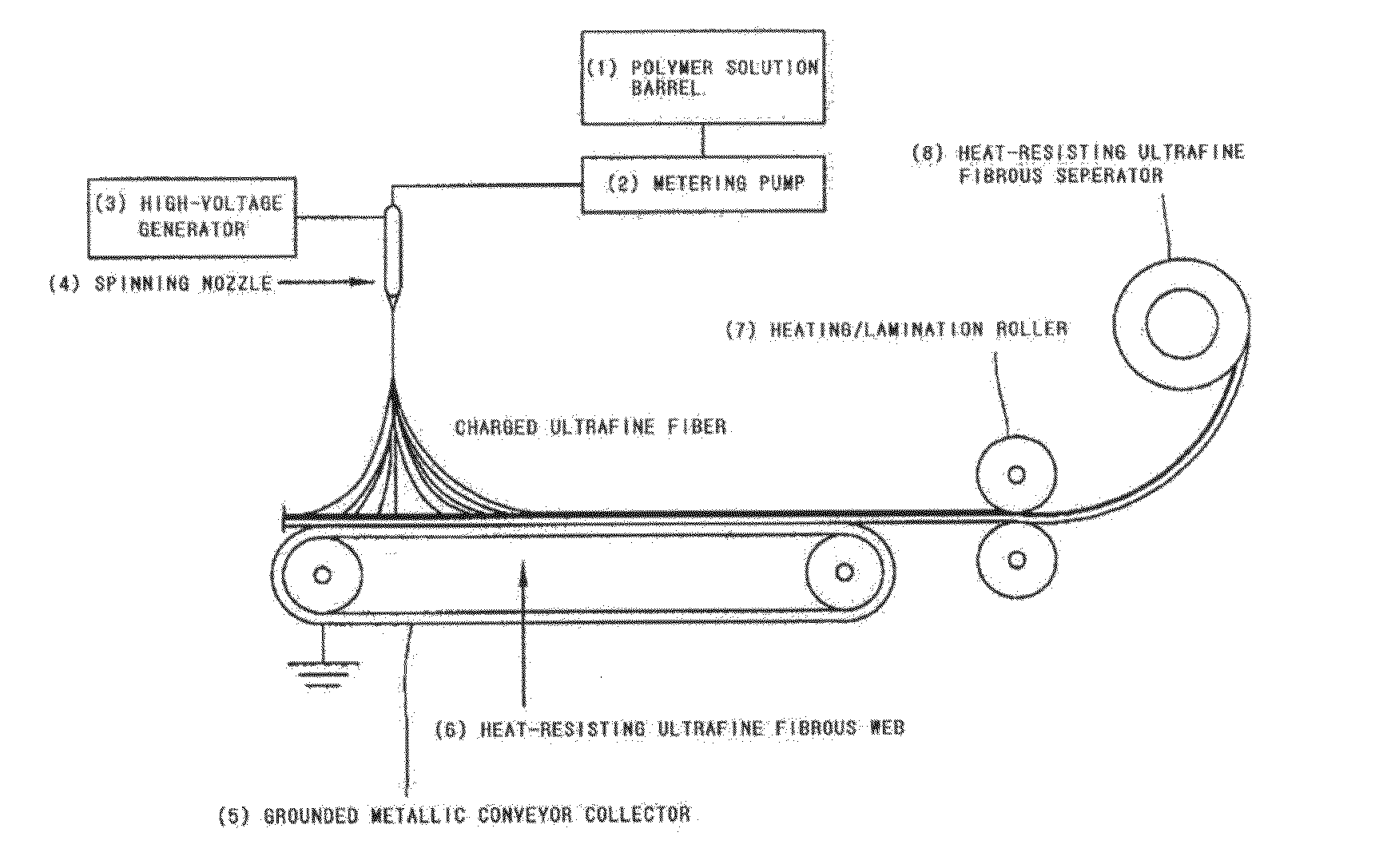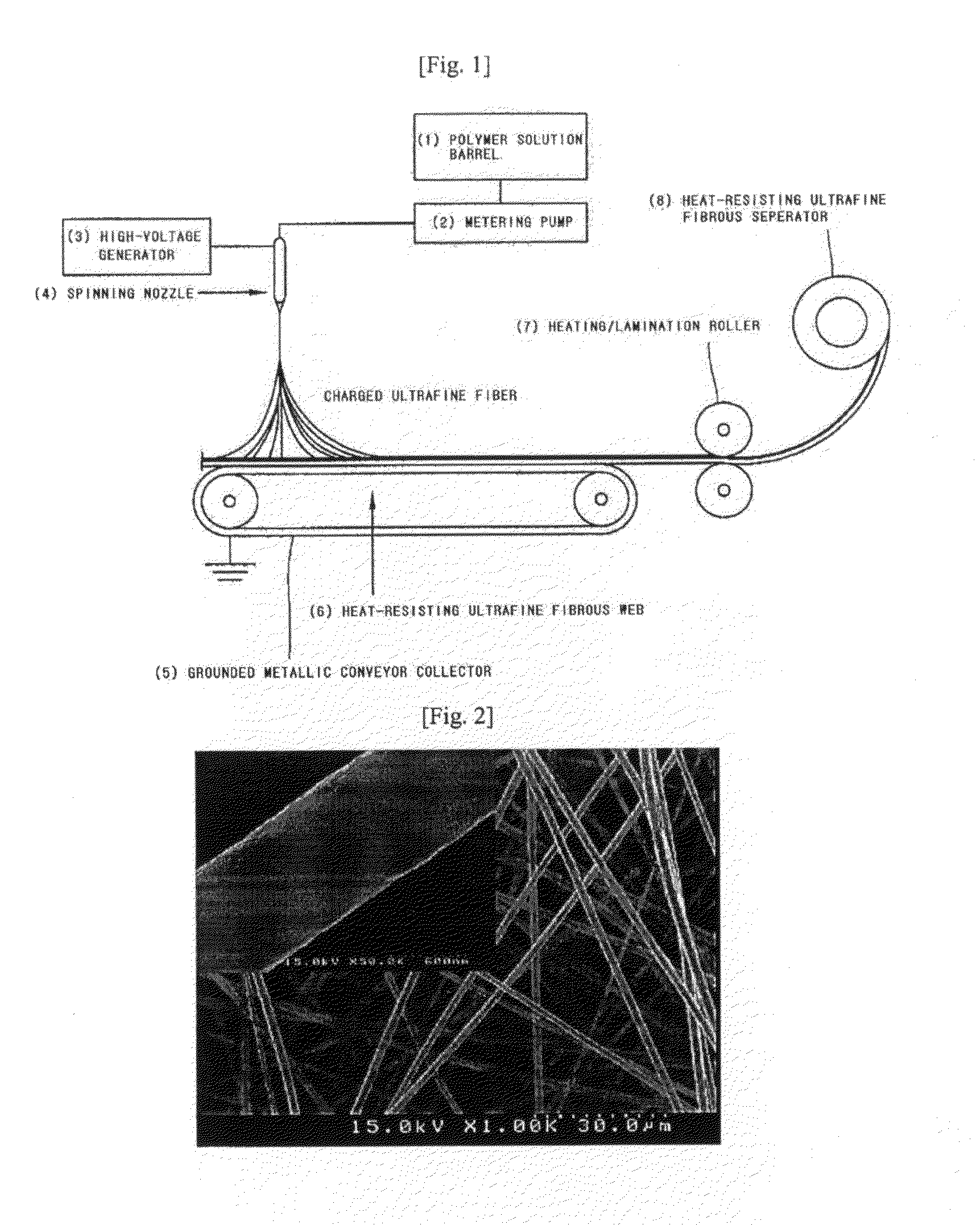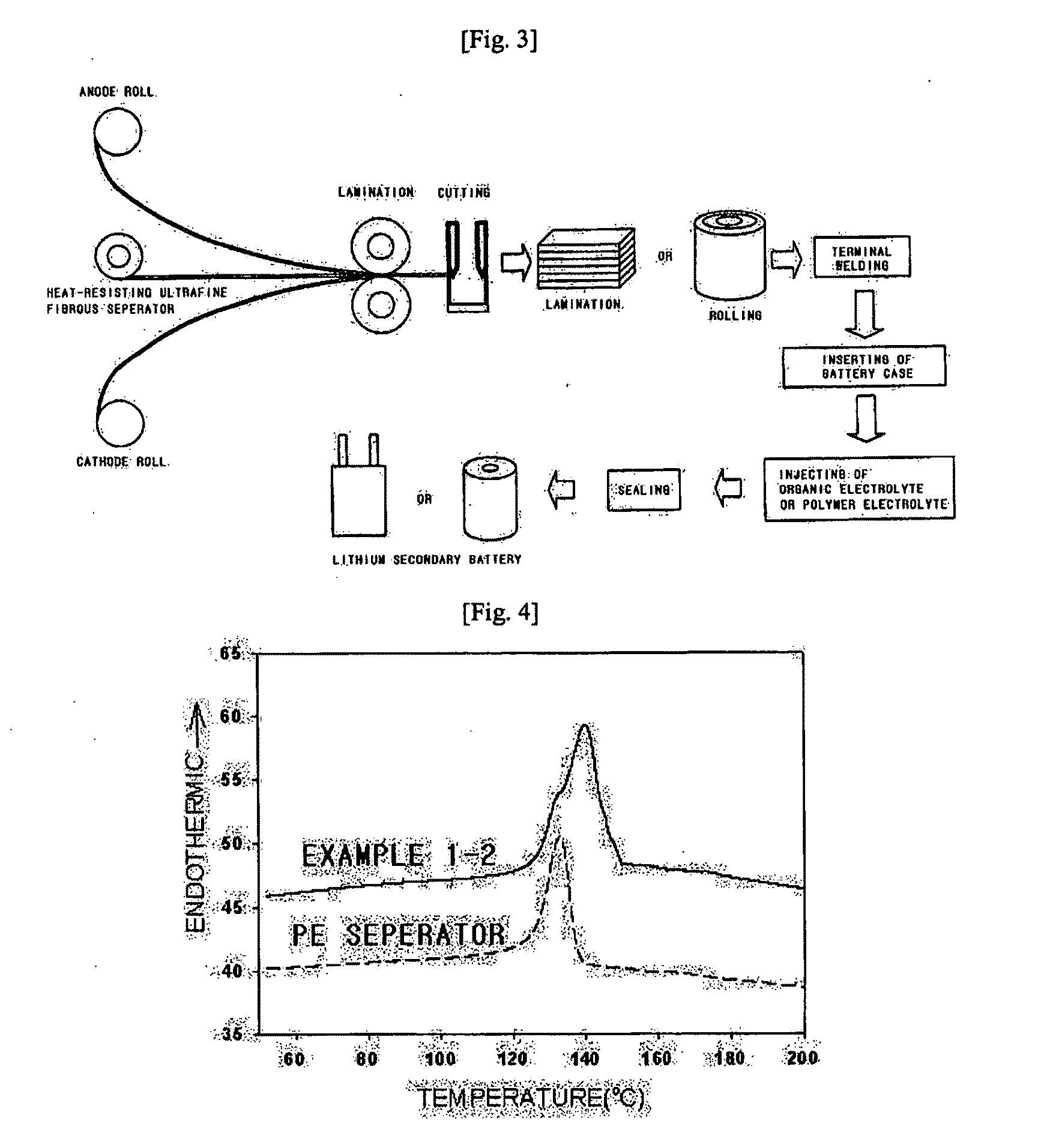Heat resisting ultrafine fibrous separator and secondary battery using the same
a technology of ultrafine fibrous separator and secondary battery, which is applied in the manufacture of final products, record information storage, synthetic resin layered products, etc., can solve the problems of short circuit, insufficient to be used for batteries having a high energy density and a high capacity in an aspect of thermal endurance, and achieve excellent ionic conductivity, low thermal contraction, and high thermal endurance
- Summary
- Abstract
- Description
- Claims
- Application Information
AI Technical Summary
Benefits of technology
Problems solved by technology
Method used
Image
Examples
example 1-1
[0054]In order to prepare a heat-resisting polymer ultrafine fiber by an electrospinning, 10 g of poly(meta-phenylene isophthal amide) and 5 g of poly (vinylidene fluoride-co-hexafluoropropylene) copolymer (Kynar 2801) are added into 85 g of dimethylacetamide (DMAc), and then stirred at a room temperature, thereby a heat-resistant polymer resin solution is obtained. Also, the heat-resisting polymer resin solution is inputted to a barrel of an electrospinning apparatus as shown in FIG. 1, and then discharged using a metering pump at a speed of 150 μl / min. Herein, electric charge of 17 kV is applied to a spinning nozzle (4) using a high-voltage generator, so that ultrafine fiber web with the thickness of 40 μm is prepared from a mixture of the poly(meta-phenylene isophthal amide) and the poly(vinylidene fluoride-co-hexafluoropropylene). That is, the fiber forming the separator includes a phase of a heat-resisting polymeric material and a phase of a swelling polymeric material.
[0055]An...
example 1-2
[0056]In order to prepare a heat-resisting polymer ultrafine fiber by an electrospinning, 15 g of poly(meta-phenylene isophthal amide) is added into 85 g of dimethylacetamide (DMAc), and then stirred at a room temperature, thereby a heat-resistant polymer resin solution is obtained. Also, 5 g of poly (vinylidene fluoride) [Kynar 761] is dissolved in 95 g of dimethylacetamide (DMAc), into which 10 g of polyethylene fine powders (0.1 μm) having 132° C. of softening point are dispersed to prepare a dispersed solution. Two polymer solutions are electrospun through separated spinning nozzles, respectively, in a same discharging speed, accordingly, a web which is a mixture of poly(meta-phenylene isophthal amide) ultrafine fibrous phase and poly(vinylidene fluoride) / polyethylene ultrafine fibrous phase and has the thickness of 40 μm is prepared. That is, the separator includes two kinds of fibers, one is a fiber including the fibrous phase of heat-resisting polymer material, the other is t...
example 1-3
[0058]A web which is a mixture of poly(meta-phenylene isophthal amide) ultrafine fibrous phase and poly(vinylidene fluoride) / polyethylene ultrafine fibrous phase and has the thickness of 60 μm an is prepared in the same method with the example 1-2, and then is laminated by compression at a temperature of 125° C., so that a heat-resisting ultrafine fibrous separator having the thickness of 20 μm is prepared. An apparent porosity, the electrolyte uptake (%), Shrinkage rates at the temperature of 120° C. and 150° C. of this separator are shown in Table 1.
PUM
| Property | Measurement | Unit |
|---|---|---|
| melting point | aaaaa | aaaaa |
| melting point | aaaaa | aaaaa |
| size | aaaaa | aaaaa |
Abstract
Description
Claims
Application Information
 Login to View More
Login to View More - R&D
- Intellectual Property
- Life Sciences
- Materials
- Tech Scout
- Unparalleled Data Quality
- Higher Quality Content
- 60% Fewer Hallucinations
Browse by: Latest US Patents, China's latest patents, Technical Efficacy Thesaurus, Application Domain, Technology Topic, Popular Technical Reports.
© 2025 PatSnap. All rights reserved.Legal|Privacy policy|Modern Slavery Act Transparency Statement|Sitemap|About US| Contact US: help@patsnap.com



